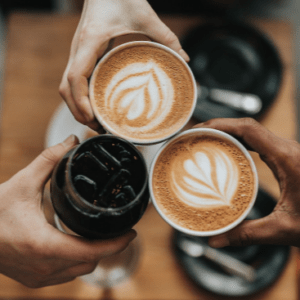
Understanding the different coffee beans and their qualities
Coffee is a beloved beverage for millions of people all over the world, but did you know that not all coffee beans are created equal? Understanding the different coffee beans and their unique qualities can take your appreciation for this delicious drink to a whole new level. For example, Arabica beans are known for their sweet, smooth taste, while Robusta beans have a more robust and bitter flavor. Other factors like the origin of the beans, the altitude they were grown at, and the roasting process can also contribute to the final product. By delving into the differences between various coffee beans, you can truly deepen your appreciation for the intricacies of this beloved drink. The folks at MauiCoffee note that you can find various different coffee beans online. Make sure to research which type is the right fit for your needs.
Choosing the right grind size for optimal extraction
When it comes to brewing the perfect cup of coffee, grind size plays a critical role in achieving optimal extraction. Whether you’re using a French press, pour-over, or espresso machine, the size of your coffee grounds will affect the taste, aroma, and strength of your brew. Too large of a grind size and you risk under-extracting your coffee, leaving you with a weak, watery cup. Too small of a grind size and you risk over-extracting, resulting in a bitter, burnt-tasting coffee. Finding the right grind size can be a matter of trial and error, but with a little experimentation, you’ll be on your way to coffee perfection in no time.
The importance of water temperature when making coffee
Coffee is undoubtedly a staple in the daily lives of millions of people around the world. But did you know that the temperature of the water you use to make your coffee could make or break the taste of your morning brew? The ideal water temperature for coffee brewing falls between 195-205 degrees Fahrenheit. Using water that is too hot will result in a burnt, bitter taste, while water that is too cool will yield a weak and uninspiring cup. When making coffee, it is crucial to pay attention to the temperature of your water – after all, a great cup of coffee is worth the hassle! Water temperature is an important element when it comes to brewing the perfect cup of coffee.
How to properly measure coffee grounds for desired strength
Coffee lovers know that the perfect brew does not only depend on the quality of the beans but also on the right amount of coffee grounds. The ideal strength of a cup of coffee can differ from person to person, and getting it right starts with proper measurement. Whether using a scoop or a scale, the key is to know the ratio of coffee grounds to water for your desired strength. Generally, a good rule of thumb is to use two tablespoons of coffee per six ounces of water for a regular cup, but adjusting the amount of coffee or water can result in a stronger or milder brew. So keep in mind the importance of measuring your coffee grounds for the perfect cup of joe every time. When you master this, you’ll be ready to take your coffee brewing skills up a notch!